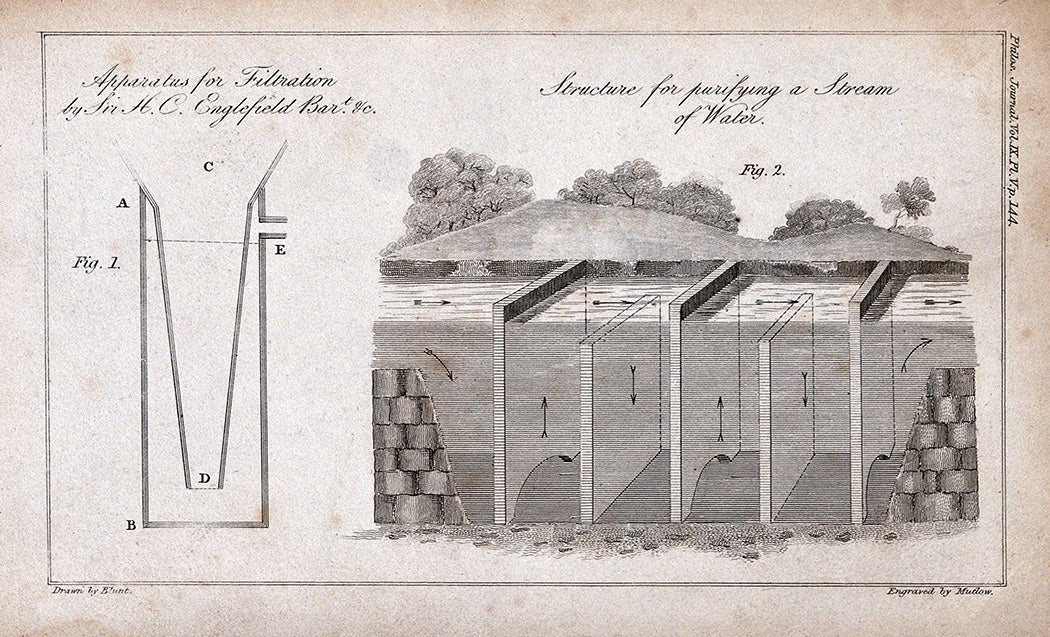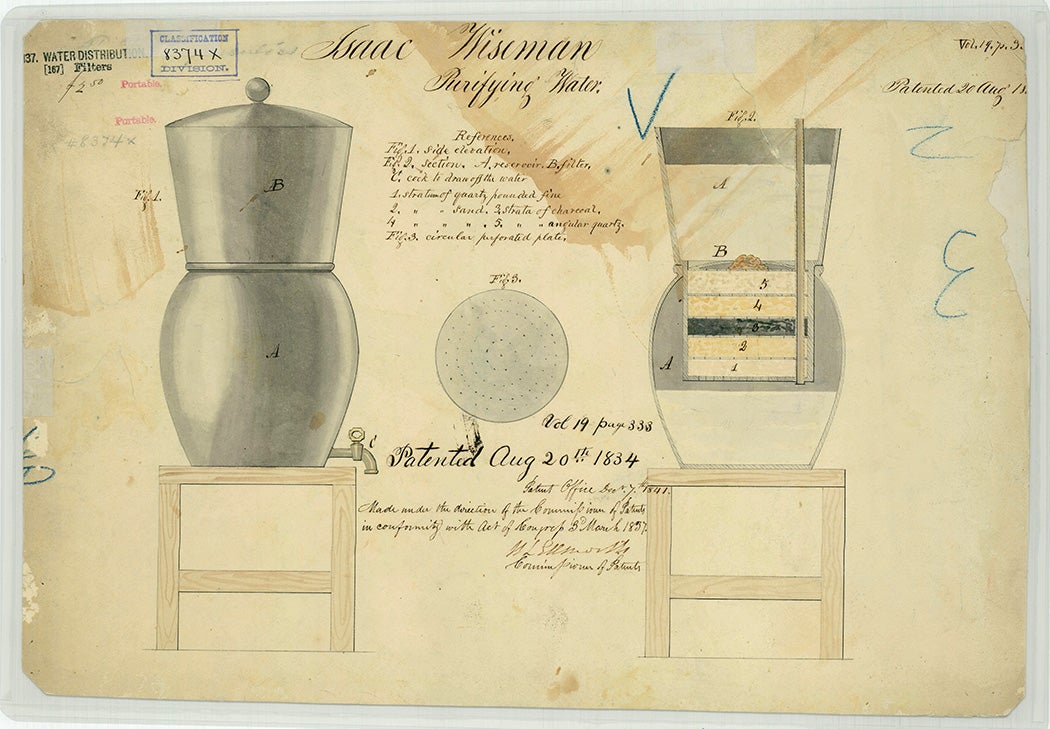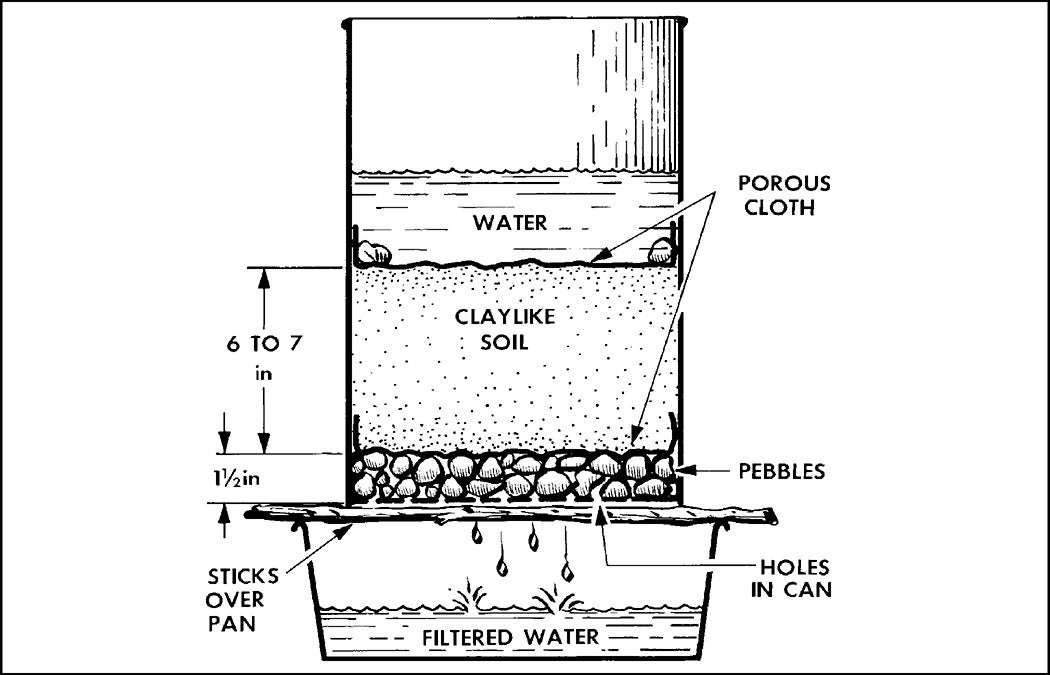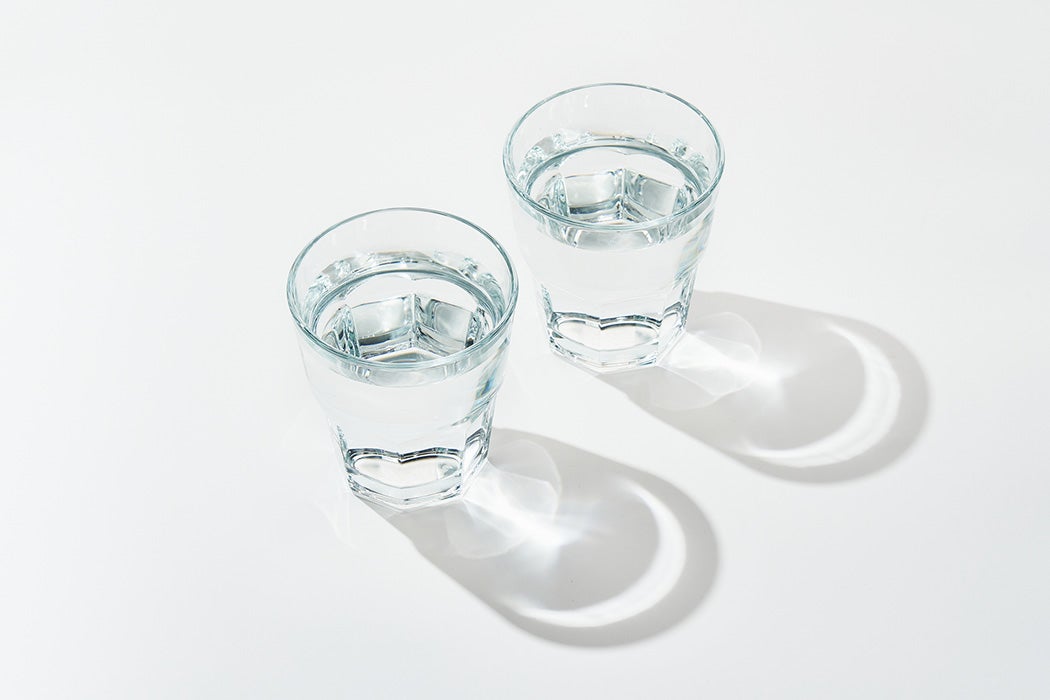In April 2024, the United States Environmental Protection Agency (EPA) introduced the first-ever national drinking water standards to monitor the presence of per- and polyfluoroalkyl substances (PFAS) in drinking water. The decision came in light of research tying PFAS exposure to cancer, thyroid dysfunction, and other ailments. The EPA maintains other enforceable standards for drinking water, limiting acceptable amounts of lead, arsenic, and even pathogens like E. coli. Though recent contaminants have thrust the safety of drinking water back into the spotlight, the concept of keeping drinking water clean is not at all novel. It dates back at least 3,500 years to ancient Egypt.
Early depictions of water purification techniques appear in Egyptian tombs from the fifteenth and thirteenth centuries BCE: In The Manners and Customs of the Ancient Egyptians, Sir John Gardner Wilkinson sketches a reproduction of water filtration from a tomb at Thebes.
“Siphons are shown to have been invented in Egypt, at least as early as the reign of Amenophis [Amenhotep] II,” Wilkinson writes. Siphons
again occur in the paintings of the third Rameses. In a tomb at Thebes bearing the name of Amenophis their use is unequivocally pointed out by one man pouring a liquid into some vases, and the other drawing it off, by applying the siphon to his mouth, and thence to a large vase.
Ancient Egyptians may have also used alum to “remove suspended solids,” write Ellen L. Hall and Andrea M. Dietrich, in a process known as flocculation, which is still used in water departments today.
Ancient Sanskrit texts, such as the Sushruta Samhita from the third or fourth century CE also outline various ways to filter water.
“Muddy water, for example, is made clear using natural coagulants such as the seeds of the nirmali tree (Strychnos potatorum). After a thick paste of the crushed seeds is added to water, suspended particles coagulate and settle at the bottom,” the text advises. The Sushruta Samhita also suggests leaving water outside to be purified by sunlight.
Hippocrates (c. 450–380 BCE) was also keen on the importance of consuming clean water, and he dedicated an entire treatise to this proposition. In Airs, Waters, Places, he stresses the importance of water on health, and warns of the perils that ensue from failing to boil rain-water before drinking it.
“[Rains have] the best of waters,” he writes, “but they require to be boiled and strained; for otherwise they have a bad smell, and occasion hoarseness and thickness of the voice to those who drink them.”
Moreover, he produced a physical manifestation of his ideas with the “Hippocrates’ sleeve,” a cloth bag through which boiled rain water should be filtered .

Hippocrates was guided in his thinking by the theory of humoral medicine, which posited that there are four humors (blood, phlegm, yellow bile, and black bile), which must be balanced for good health. He recognized that impure water could throw off these humors, causing disease or even death, and he encouraged doctors to examine various kinds of water to determine whether or not they would be beneficial to humans.
The reigning theory of the humors still loomed over medicine and science when Antonie van Leeuwenhoek first created the microscope in the late seventeenth century. His innovation led to the discovery of microorganisms flourishing in water. In a sample of water surrounding green weeds, van Leeuwenhoek described “a great number of Animalcula [swimming] in Circles [through] the Water…even to the naked Eye they [seemed] like a Cloud.” The magnification of the organisms often lurking beneath the surface of everyday lives ushered in an era of applying scientific discovery to the lives of humans, and in 1746, write Hall and Dietrich, the first official patent was granted for a water filter; its design consisted of sand and sponges.

As industrialization accelerated and populations migrated to cities from rural areas, water quality became linked inextricably with disease spread. According to Ellen Hall and Andrea Dietrich, John Snow, an English physician and epidemiologist who did extensive ethnographic work on cholera, traced the 1854 outbreak of the disease in London to sewage contamination, write Hall and Dietrich. Snow himself explained that “the reason why the water of this pump produced the great outbreak is, I feel confident, that the evacuations of one or more Cholera patients found their way, by some means, into the well.”
By the twentieth century, water filtration was synonymous with advanced cityscapes. In a 1914 retrospective analysis on water filtration in the Journal of American Water Works Association, George A. Johnson wrote that Snow’s discovery that the disease could be transmitted through water pre-dated germ theory, a late nineteenth century discovery that microorganisms could carry disease-laden pathogens.
“It is now eighty-five years since the first municipal water filter was built at London,” writes Johnson,
and this filter was built to perform only the functions of a mechanical strainer for the removal of suspended matter. The two most important water-borne diseases, typhoid fever and cholera, had not then been discovered, nor, indeed, was the germ theory of disease seriously advanced until some twenty years later.
Municipalities with developed city-wide filtration systems gained reputations for being clean and healthy environments. A 1939 article written by E. F. Armstrong for the Journal of the Royal Society of Arts celebrated London’s water quality and the role it played in ensuring residents might enjoy their privacy; instead of going to public bathhouses or public wells, residents could perform their ablutions at home with water from their very own taps.

“Nearly every household has safe potable water on tap as well as copious supplies for washing and household purposes,” Armstrong writes. With that,
[w]hat is everybody’s business tends to become nobody’s, at least very few of us concern ourselves with what is one of the greatest benefits of civilization, indeed without it the herding together of vast numbers of people in towns would be impossible.
Today, as many as 3.6 billion people remain without access to clean and safe drinking water. Just like any discovery, “scientific progress” doesn’t always equal expanded access, especially as the climate crisis accelerates water scarcity. While filtration can turn poisonous water into something life-giving, the resource itself is often at risk. As the recent Flint, Michigan water crisis shows, even utilities in the United States are struggling to maintain clean drinking water.
Yet the practices that go into cleaning water and ensuring its safety, including coagulation, sedimentation, and treatment, aren’t new. They’re rooted in the earliest human civilizations. Today, these filtration systems operate at a larger scale and use different technologies, but their aim is the same: to make water drinkable in order to ensure the preservation of civilizations to come.







